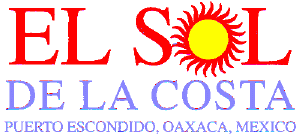

According to municipal records, the image of St. Isidore was delivered to the town in January of 1953, when the mayor proclaimed that the fiesta for their new patron saint would take place on February 15 that year and henceforth.
May 15 is the actual saint's day for St. Isidore, San Isidro Labrador, the pious Spanish peasant who is patron saint of numerous agricultural towns. But May is not a time of great prosperity in the area, the rains are starting and the fields must be prepared.
Chila or Bajos de Chila, as it is officially known (bajos means lowlands; much of the town is actually below sea level), is surrounded by rich agricultural lands and boasts abundant sources of fresh water. It gets its name from a famous curandera, or native healer, named Lucila, who once lived in the town. When People were sick they'd say "Vamos a Chila" - Let's go see Chila", a nickname for Lucila.
The fiesta begins with the selection of the fiesta queens and a slew of sports events.
You can spend an afternoon at the jaripeo, the bull-riding rodeo, stroll the carnival midway, sample local delicacies or browse through the numerous stalls set up by itinerant merchants.
There are dances and cultural events, and on Sat. 14, Valentine's Day, the castillo, an amazing fireworks display, preceded by the mayhem of the running of the toritos.
Of special interest at the Chila Fair are the cock fights and the Pelota Mixteca (Mixtec Ball) tournament. Brought over from the Old World, the fighting of cocks has become highly sophisticated with specialized breeding techniques, feed formulas and a small industry to supply the paraphernalia of the game, from cages to the satin-lined cases for the lethal one-inch blades that are attached to the birds' spurs. Some aficionados admit that they spend more to feed their roosters than they do their family. But there is an awful lot of money to be made from big purse tournaments, selling a successful breed and, most of all, gambling.
Pelota Mixteca traces its roots back to the ceremonial ball playing that existed among all the pre-Colombian cultures. The game is played with a large 2-lb. natural-rubber ball. Teams of five to seven players pound the ball back and forth using elaborately decorated gloves that weigh between 7 and 12 lbs. The ball can only bounce once. The winners team must take five sets of three games, each game consisting of four points. The grueling matches can last for as long as four hours.
Chila provides good security for its visitors and lots of buses and
taxis to ferry fiesta-goers the 10-minutes to and from Puerto.